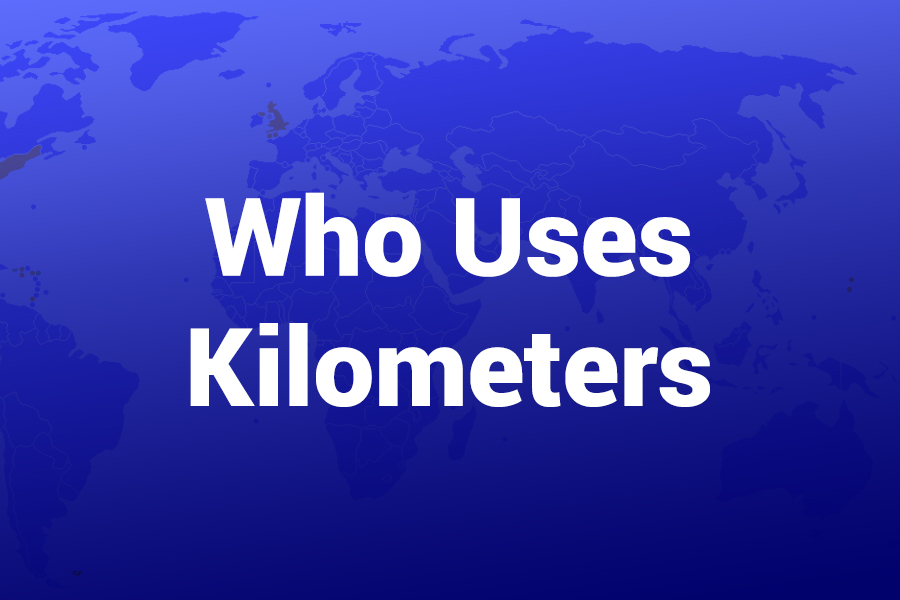In our globally connected world, measurement standards play a vital role in everything from transportation to daily life. One such measure, the kilometer (or kilometre), dominates how most people quantify distances—and who uses kilometers is a question with a revealing answer.
In this article you’ll learn which countries use kilometers, why they adopted them, where exceptions remain, and how the U.S. fits into the picture. You’ll also see recent statistics and practical implications in travel, mapping, and education—in this article.
Who Uses Kilometers?
Globally, most countries use the metric system, and with that comes kilometers as the primary unit for distance. Only a handful of nations maintain alternative systems. The vast majority of road signs, maps, weather reports, and navigation tools rely on kilometers.
Although the United States, Myanmar, and Liberia are often cited as exceptions, the situation is nuanced: metric usage exists in many sectors even within those countries. All other nations officially—or practically—employ kilometers for everyday distance measurement.
Why Kilometers Dominate
When France introduced the metric system in the late 18th century, it created a standardized, decimal-based system. Over time, many countries adopted it for consistency, trade, and scientific coherence.
Kilometers (1,000 meters) proved intuitive. As industries globalized and cross-border travel expanded, countries faced pressure to align with international standards. Today, kilometers serve as the backbone of measurement for nations embracing the International System of Units (SI).
Countries That Use Kilometers
Here’s an overview of how kilometers are used across regions:
- Europe: Nearly all European nations use kilometers for road distances and speeds. The European Union mandates kilometer usage on speedometers and road signs.
- Asia: Mainland China, India, Japan, South Korea, and most Southeast Asian nations use kilometers consistently.
- Africa: Almost every African country relies on kilometers for mapping, driving, and infrastructure.
- South America: All countries in Latin America use the metric system and express distances in kilometers.
- Oceania: Australia and New Zealand use kilometers for roads, mapping, and civil life.
Only a few countries publicly use miles or imperial measurements for road distance and speed. Those include the United States, Myanmar (Burma), and Liberia. However, even in these nations many aspects of science, medicine, and logistics use metric units behind the scenes.
Statistics and Current Trends
Recent data show that over 90% of the world’s population lives in countries that officially use the metric system—including kilometers. Only about 9 percent of the world’s 196 countries still use miles (imperial) for road distances. That small group includes the U.S., Liberia, and Myanmar. In many modern contexts, even U.S. industries use metric units for trade and science—even if everyday roads still say “miles.” The United States legally allowed metric use since 1866, and metric became the preferred system in trade and commerce in 1988—yet road distances remain largely in miles.
How the U.S. Engages With Kilometers
Although Americans drive using miles, many U.S. industries, academic fields, and international trade operations rely on metric units—including kilometers. U.S. cars often display both miles and kilometers per hour on speedometers. Furthermore, scientific research, medical dosing, and global shipping operate in metric units. In that sense, even in the U.S. kilometers are not entirely foreign.
Practical Areas Where Kilometers Are Used
Let’s examine real-world domains where kilometers are indispensable:
- Road Signage and Speeds
Countries using kilometers post speed limits in km/h. Drivers source navigation in kilometers. Motorists moving between countries must adjust. - Mapping and Navigation
Maps, GPS, and mapping software default to kilometers in metric countries. When crossing into a non-metric territory, conversion is needed. - Infrastructure and Construction
Distances for highways, rail lines, pipelines, and bridges are planned and recorded in kilometers. - Education and Science
Textbooks teach distance using meters and kilometers. Scientific research globally standardizes on kilometers for spatial scales. - Weather and Aviation
Meteorological reports often measure visibility and storm travel in kilometers. Aviation sometimes uses nautical miles but ground air traffic still uses kilometers in many nations.
Historical Shifts and Metrication
Many countries transitioned from imperial to metric systems during the 19th and 20th centuries. For example, Ireland adopted kilometer-based road signage and speed limits only in 2005.
Some British Commonwealth nations gradually phased out imperial units across decades. In some places, vestiges remain—like beer sold by the imperial pint or dual labeling of goods—but road distances invariably use kilometers.
Exceptions and Edge Cases
While kilometers are almost universal, a few nuances remain:
- Some U.K. territories and former colonies may retain certain imperial units.
- In Sweden and Norway, a colloquial “mil” (meaning 10 km) is still used informally in speech or car ads.
- In the U.S., speed signs remain in miles per hour, though scientific fields use metric units.
- Some rural areas or local signage (especially in border zones) may show both miles and kilometers.
Conversions and Tools
Because roads in different countries use different units, many tools help convert between kilometers and miles:
- To convert km to miles: multiply by 0.621371
- To convert miles to km: multiply by 1.60934
Navigation apps and car dashboards often switch units automatically when crossing borders.
Impact on Travelers and Commerce
If you drive from the U.S. into Canada or Mexico, your odometer and speed unit must adjust. Tourists often misread speed limits when they see numbers without units. International trucking and freight commonly adopt metric measures, so logistics planning uses kilometers even if local roads use miles in some countries.
Future Outlook
Global momentum continues toward metric unification. Even in non-metric nations, metric use grows in science, industry, and commerce. Over time, road systems might fully adopt kilometers—or at least dual signage. For now, understanding who uses kilometers gives travelers, engineers, and educators clarity.
Conclusion
Most of the world already uses kilometers. The metric system provides simplicity, consistency, and compatibility across nations.
Even in places where miles still dominate everyday driving, kilometers operate behind the scenes in critical domains. If you plan to travel, study, or work globally, mastering the concept of kilometers is essential.

